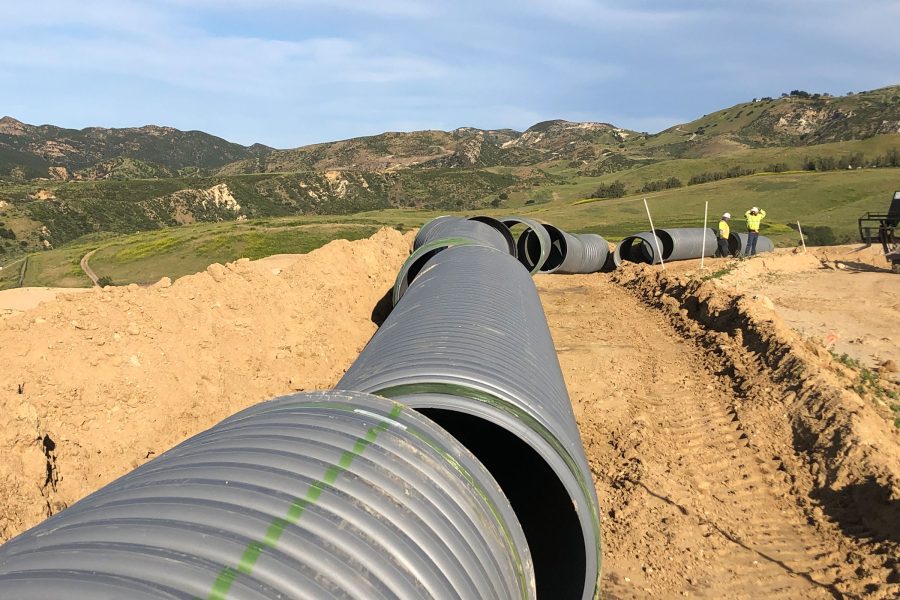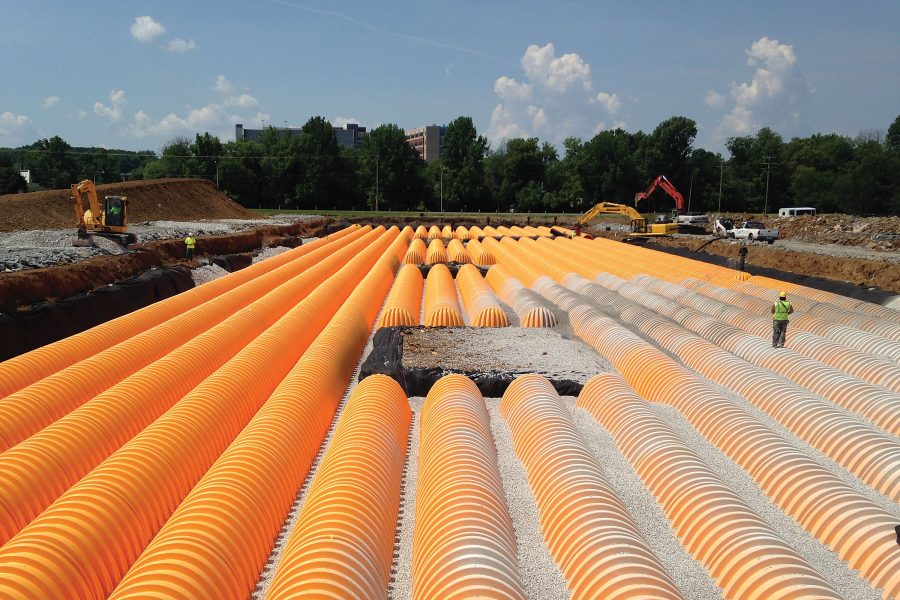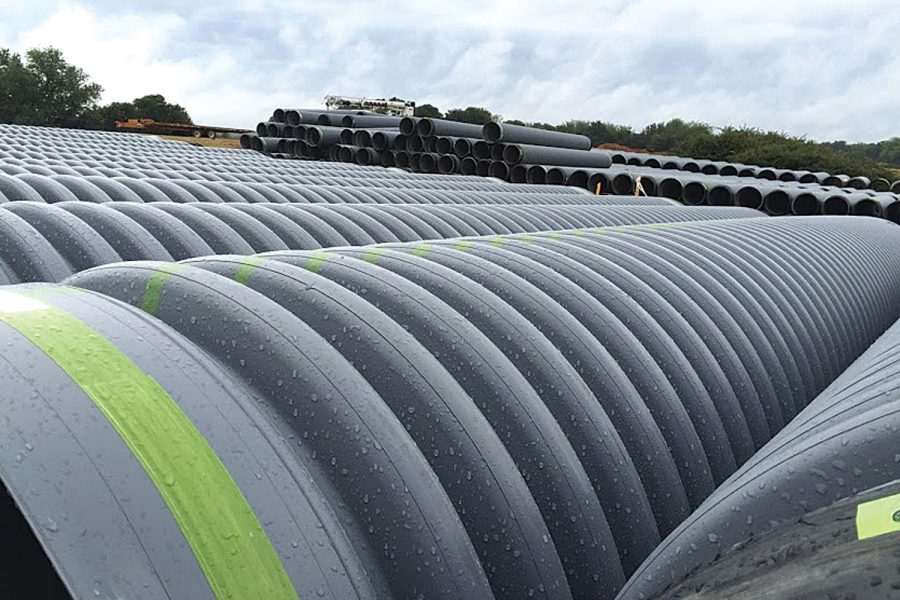Story at a glance:
- Investing in your water infrastructure now can pay off down the road.
- Smart systems think about how to use stormwater to your advantage.
- Building a truly resilient system means also planning how to recover from problems if needed.
In 2024 Hurricane Helene unleashed more than 40 trillion gallons of rain across its path. That’s the amount of water that’s in Lake Tahoe.
Now picture Niagara Falls. If you waited for that amount of water to go over the falls, “you’d be standing there for 21 months,” says Brian King, executive vice president of product management and marketing at Ohio-based Advanced Drainage Systems (ADS), which manufactures stormwater and onsite septic wastewater solutions.
Hurricane Helene wasn’t your average hurricane, ranking as the seventh costliest US tropical cyclone and one of the country’s deadliest hurricanes. But right now the definition of an average storm isn’t crystal clear.
“Your 50-year storm now happens every 20 years, right? Or even every 10 years,” King says. “Stormwater management is becoming increasingly important as you see the changing weather patterns.”
And that’s making it increasingly important to build in resiliency, sustainability, and any adaptability you can into your water infrastructure. You want to think holistically about how to manage stormwater today—and how to do it 25 or 50 years into the future. “Generally speaking when you build stormwater infrastructure there’s not a lot of opportunity to go back and revamp and renovate that,” he says.
Invest for the Long Term

A stormwater management project is under way at Porter Ranch. Photo courtesy of ADS
Taking those steps can require looking at the investment in water infrastructure in a different way. “A lot of times, we look at the initial cost, and not the total cost over the life cycle of how long that infrastructure is supposed to last,” King says.
For ADS its water management solutions are designed to last decades. “Our pipe is designed and manufactured to last up to 100 years.”
Now we’re starting to think about stormwater as a resource or an asset.
People should also be thinking about how to use stormwater to their advantage. “Traditionally stormwater has been seen as a nuisance: You try to get it away from where you don’t want it to somewhere that’s not going to cause any harm,” King says. “And now we’re starting to think about stormwater as a resource or an asset.”
Can it be stored and used for irrigation, gray water, or even potable water? “I think that’s how things are starting to change, as opposed to just ‘get it away from where I don’t want it to be,’” King says.
Sustainability Makes Sense

In 2024 ADS bought 540 million pounds of recycled material, helping to recycle 33% of all high-density polyethylene bottles in the US. Photo courtesy of ADS
ADS, which manufactures corrugated plastic drainage pipe for its water management solutions, offers various advantages in terms of resiliency. “Most systems, if they’re going to fail, they’re likely going to fail at the joint between one pipe and another pipe,” King says. “Our pieces of pipe are 20 feet long versus, if you’re using concrete, 6 to 8 feet long. So there are less joints.”
Plastic pipe can also make for easier recovery should a system run into problems. “We would tell you that one of the benefits of using plastic pipe is you can recover faster. Everyone wants to build a system that’s resilient and is going to last, but you also have to plan for what happens if it doesn’t.”
ADS focuses on not just resiliency but also sustainability, manufacturing many of its products from recycled plastic. It’s been doing that since the 1970s, initially because it was a source of raw materials that offered financial benefits. But that’s taught the company an important lesson: “Good sustainability practices have to be based on good financials,” King says.
These efforts reduce the greenhouse gas emissions of the company’s products and help keep plastic out of landfills. In 2024 ADS bought 540 million pounds of recycled material, helping to recycle 33% of all high-density polyethylene (HDPE) bottles in the US.
An expansion of its recycling facility in Cordele, Georgia, that kicked off in early 2025 will help ADS increase its capacity for processing recycled material and support recycling in general. “It’s going to provide that outlet for demand, so the material recovery facilities down there can actually sell it,” King says. “And that spurs investment in more recycling.
“I’m here to tell you that recycling does work,” he says. “It’s not easy; there’s no silver bullet to recycling. There are all sorts of challenges to overcome, but it can work, and it is economically viable.”
Address Your Specific Needs

HP Storm offers up to 100% greater pipe stiffness over traditional plastic pipe, according to ADS. Photo courtesy of ADS
For King, resiliency and sustainability go hand in hand. “Plan for the future; make sure what you’re building is going to be a good investment and be resilient enough to address what’s going to change,” he says. “And then, if you can build it using sustainable materials, or materials that have less greenhouse gas emissions, that’s the trifecta of good stormwater management.”
But while these are general approaches everyone should consider, every stormwater management solution is unique to the piece of property being developed and the area where it is. “Developing a system in the south of Florida, where the water table is very high and where you have some interesting storm activity going on, is going to be very different than if you’re developing a system in Colorado, where you’ve got snow melts and some other pieces,” King says.
That’s why it’s important to think more about the long-term cost of a system than just the initial cost, and to make sure it’s accomplishing exactly what you need it to do. “We think about that as the life cycle of a raindrop,” he says. “I think that’s how people need to think about stormwater solutions. What happens to that raindrop once it hits the ground, and where does it go?”
R&D Central
Last fall ADS opened its new $65 million Engineering and Technology Center. The 110,000-square-foot, state-of-the-art facility centralizes the company’s R&D efforts to create innovative stormwater management solutions.
The center includes fabrication and 3D printing labs for developing prototypes, material science capabilities for assessing different plastic polymers, and tools for testing and analyzing performance. A hydrodynamics lab can recirculate up to 90,000 gallons of water for testing purposes.
“It’s taken all the different capabilities that we had across the network and put them all into one place,” King says. “That’s going to help us go through the product development cycle a lot faster.”

